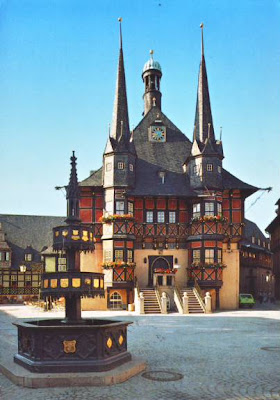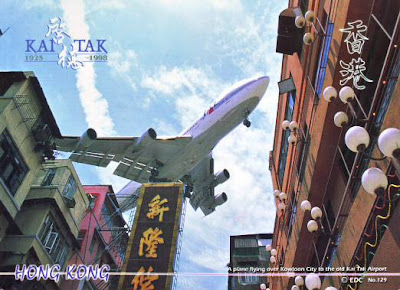2/26/2012
2/25/2012
SIRACUSA
 postcard
postcardSyracuse (Italian: Siracusa pronounced [siraˈkuːza] ( listen); Sicilian: Sarausa; Ancient Greek: Συρακοῦσαι Syrakoúsai)[2] is a historic city in Sicily, the capital of the province of Syracuse. The city is notable for its rich Greek history, culture, amphitheatres, architecture, and as the birthplace of the preeminent mathematician and engineer Archimedes. This 2,700-year-old city played a key role in ancient times, when it was one of the major powers of the Mediterranean world. Syracuse is located in the southeast corner of the island of Sicily, right by the Gulf of Syracuse next to the Ionian Sea.
The city was founded by Ancient Greek Corinthians and became a very powerful city-state. Syracuse was allied with Sparta and Corinth, exerting influence over the entire Magna Grecia area of which it was the most important city. Once described by Cicero as "the greatest Greek city and the most beautiful of them all", it later became part of the Roman Republic and Byzantine Empire. After this Palermo overtook it in importance, as the capital of the Kingdom of Sicily. Eventually the kingdom would be united with the Kingdom of Naples to form the Two Sicilies until the Italian unification of 1860.
In the modern day, the city is listed by UNESCO as a World Heritage Site along with the Necropolis of Pantalica. In the central area, the city itself has a population of around 125,000 people. The inhabitants are known as Siracusans, and the local language spoken by its inhabitants is the Sicilian language. Syracuse is mentioned in the Bible in the Acts of the Apostles book at 28:12 as Paul stayed there. The patron saint of the city is Saint Lucy; she was born in Syracuse and her feast day, Saint Lucy's Day, is celebrated on 13
 postcard
postcard postcard
postcardFDC CZECH
With almost 190 thousand members, the Czech Sokol Organization Česká obec sokolská (ČOS) is the fourth largest civic association in the Czech Republic whose goal is to promote sports, physical activities through voluntary work in Sokol versatility divisions, and cultural activities mainly through voluntary work in folklore and puppet groups.
The ancient idea of kalokagathia, developed by Miroslav Tyrš and his followers, became the basis for a social movement, which is connected with the origin and destiny of the Czech (Czechoslovak) Republic. Four times the Sokol movement was banned or its activities were restricted by wars or totalitarian regimes. It survived abroad, in communities of countrymen on all continents of the world.
In the Czech Republic the organization was restored in 1990. It resumed its traditional programme of teaching people responsibility for themselves, for their community, for their democratic country. The Czech Sokol Organization continuously updates its programme. It supports sport performances in about sixty sports, which are being organized in the organization. Sokol members compete at league to representation levels in gymnastics, handball, judo, and athletics. The organization also provides new sport opportunities, such as acrobatic rock and roll with world champions´ titles.
The most numerous part of the organization is the Sokol Versatility Division, which makes programmes of regular and leisure-time sporting activities for all kinds of people, including those who are handicapped. Sokol districts and units significantly influenced the Terry Fox Run in the Czech Republic, where, like in Canada, many people participated.
The ancient idea of kalokagathia, developed by Miroslav Tyrš and his followers, became the basis for a social movement, which is connected with the origin and destiny of the Czech (Czechoslovak) Republic. Four times the Sokol movement was banned or its activities were restricted by wars or totalitarian regimes. It survived abroad, in communities of countrymen on all continents of the world.
In the Czech Republic the organization was restored in 1990. It resumed its traditional programme of teaching people responsibility for themselves, for their community, for their democratic country. The Czech Sokol Organization continuously updates its programme. It supports sport performances in about sixty sports, which are being organized in the organization. Sokol members compete at league to representation levels in gymnastics, handball, judo, and athletics. The organization also provides new sport opportunities, such as acrobatic rock and roll with world champions´ titles.
The most numerous part of the organization is the Sokol Versatility Division, which makes programmes of regular and leisure-time sporting activities for all kinds of people, including those who are handicapped. Sokol districts and units significantly influenced the Terry Fox Run in the Czech Republic, where, like in Canada, many people participated.

Professor Jiří Trnka (24 February 1912, Petrohrad - 30 December 1969, Prague) was a Czech artist, illustrator, sculptor, scriptwriter and film director, and one of the founders of Czech animated film.
From his earliest childhood, Trnka came in close contact with puppets sculpted by his family. He studied at the School of Applied Arts in Prague (today the Academy of Arts, Architecture and Design) in 1929-35. He started his career as a stage designer and maker at J. Skupa´s Theatre of Spejbl and Hurvínek in Plzeň; he later run his own puppet theatre in today´s Theatre Rokoko in Prague. On his first meeting with puppet film he created the figure of Hurvínek for advertising purposes. He has made a place for himself in the theatrical world of Prague during the Second World War as a stage and costume designer. He was one of the founders of the Bratři v triku animated film studio. At the time he was appointed as a professor at the Academy of Arts, Architecture and Design in 1967 he had already been fighting a serious progressive illness, and on 30 December 1969 Trnka died. He is buried at the Central Cemetery in Plzeň.
He preferred and loved using puppets in his films. His best known puppet films include Staré pověsti české (Old Czech Legends) and Dobrý voják Švejk (The Good Soldier Svejk), voiced by Trnka´s friend Jan Werich. The feature film Sen noci svatojánské (A Middsummer Night´s Dream) based on the W. Shakespeare´s play belongs to the best of his lifetime work. Films such as Kybernetická babička (The Cybernetic Grandma) and Ruka zpodobňující totalitu (The Hand That Embodies Totality) also belong to Trnka´s 1960s work. He also wrote and illustrated a book of children stories Zahrada (The Garden).
2/22/2012
2/20/2012
2/16/2012
订阅:
评论 (Atom)































 POSTCARD FROM ALGERIA
POSTCARD FROM ALGERIA
















